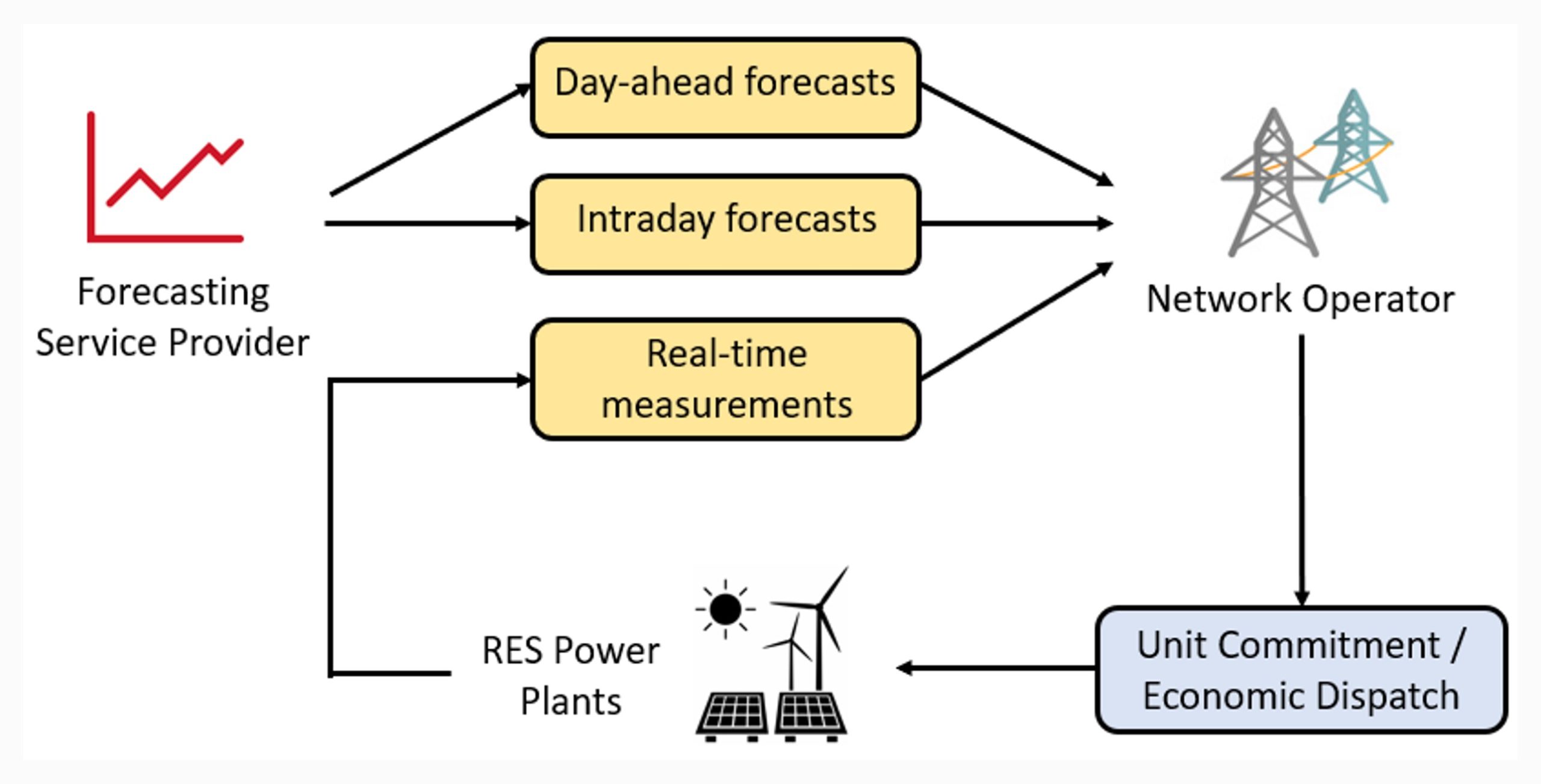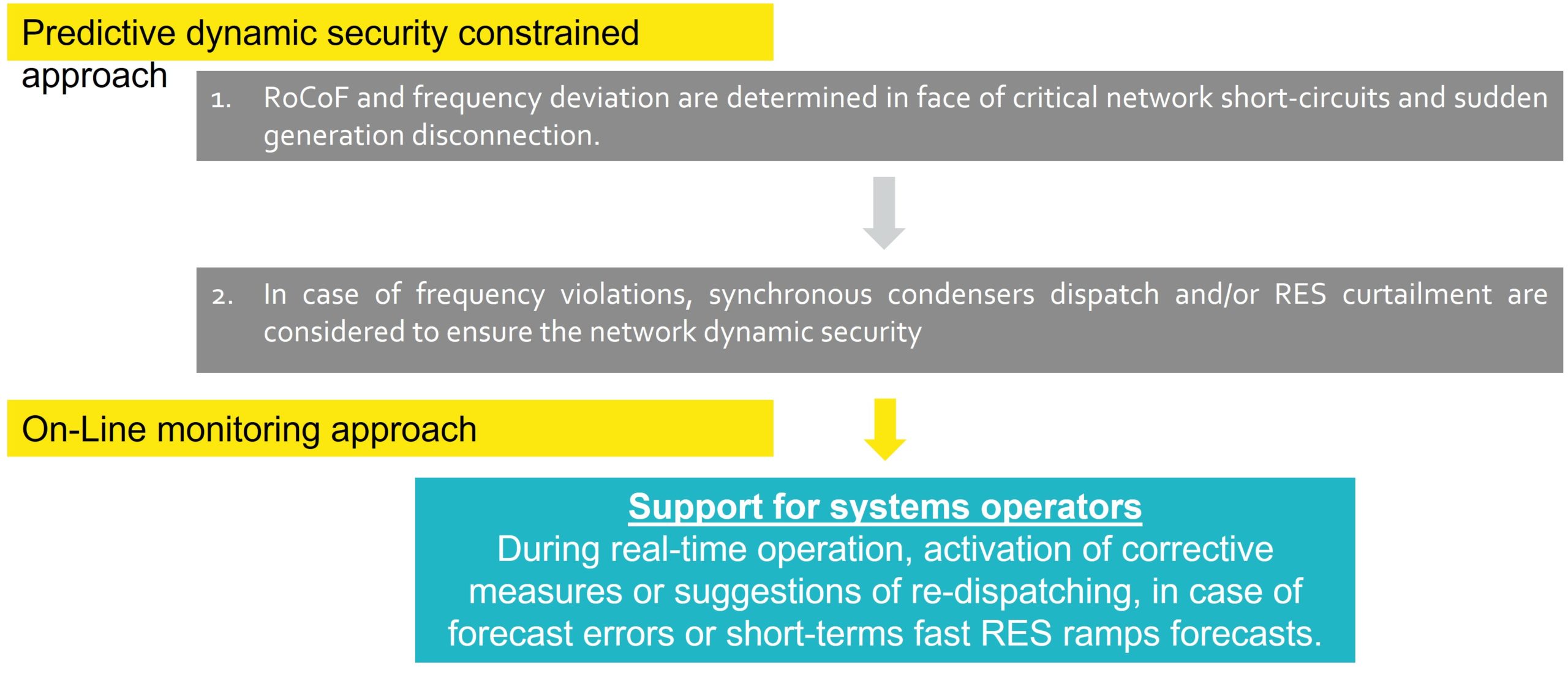Frequency Control and Inertia Management in Isolated Power Systems
Management of frequency containment reserve and system inertia in isolated power systems
Partner: INESC TEC
Actors involved: RES power plants, network operator, forecasting service provider
Context |
The dynamic security assessment is a key issue in the isolated power systems operation and management. The scope of this use-case lies within the impact that large-scale integration of converter-interfaced renewable energy sources (CI-RES) in isolated power systems brings to system dynamic security.
Summary |
The large-scale integration of converter-interfaced renewable energy sources (CI-RES) in isolated power systems has a direct impact on the reduction of synchronous machines (SM) in operation.
Consequently, the volume of synchronous inertia can be drastically reduced, alongside with the primary power-frequency control reserves. The installation of energy storage systems and synchronous condensers as a mechanism to mitigate the reduction of synchronous inertia is a technical option being considered.
This Use Case intends to propose an approach to improve the dynamic security of isolated systems (geographical islands operating autonomously) in face of critical grid disturbances (such as sudden generation trip and network faults) taking into account admissible Rate of Charge of Frequency (RoCoF) and frequency deviations (directly linked to the available primary frequency reserve volume and system inertia).
This objective is to be tacked in two-time horizons: 1) dynamic security constrained unit commitment (UC)/ economic dispatch (ED) of the generation fleet for the next day and 2) on-line security monitoring, including suggestion of preventive control action to the system operator.
Challenge |
How to assure the dynamic security of the isolated systems with large shares of converter-interfaced RES in face of certain grid disturbances (generation trip and network faults)?

Today, the state-of-the-art consists in methodologies in which the network dynamic behaviour is validated considering typically the “N-1” contingency events rule. In case of an unacceptable frequency response, synchronous condensers dispatch and RES curtailment are considered to keep the synchronous inertia adequacy.
Approach |
The approach proposed is to integrate a dynamic security constrained algorithm in the UC/ED activity of isolated power systems.

Innovative content of forecasting solution
Instead of using averages values in the temporal resolution interval, it is planned to consider other statistics calculated for each temporal interval, namely: min, max and standard deviation (as well as confidence intervals)
| KPI | Improvement of the network dynamic stability |
